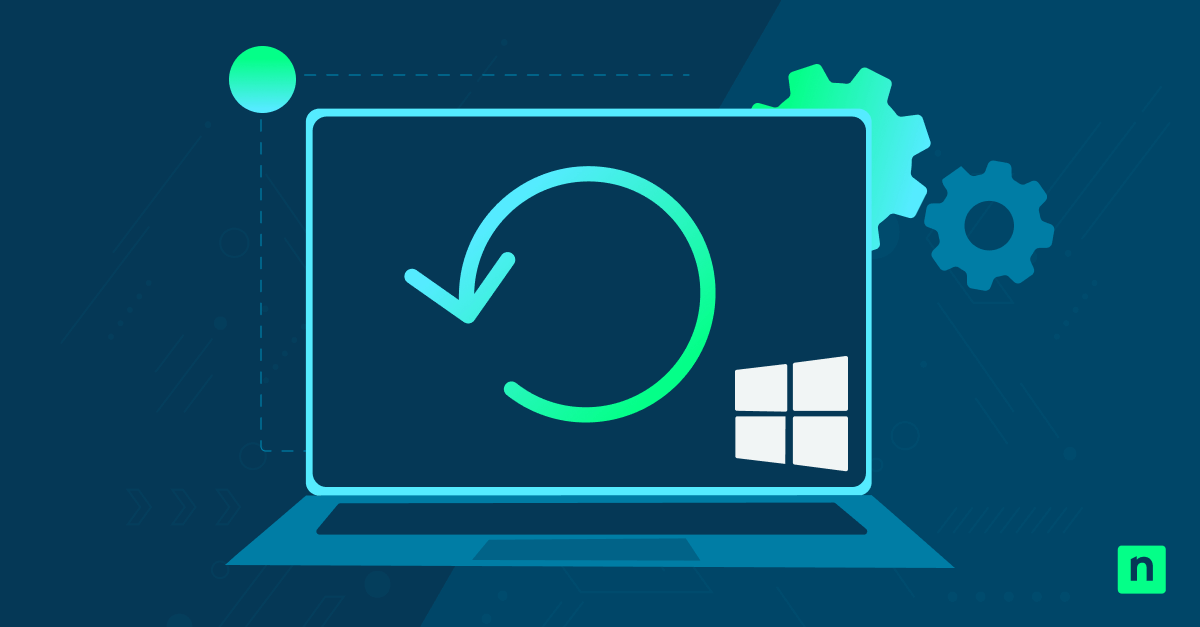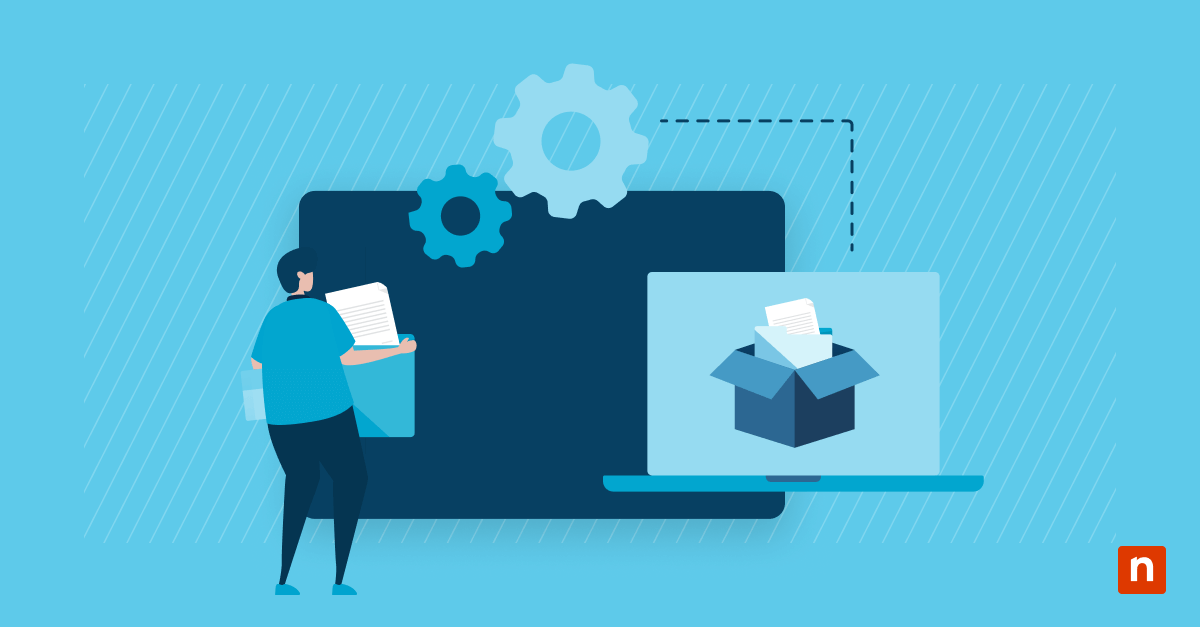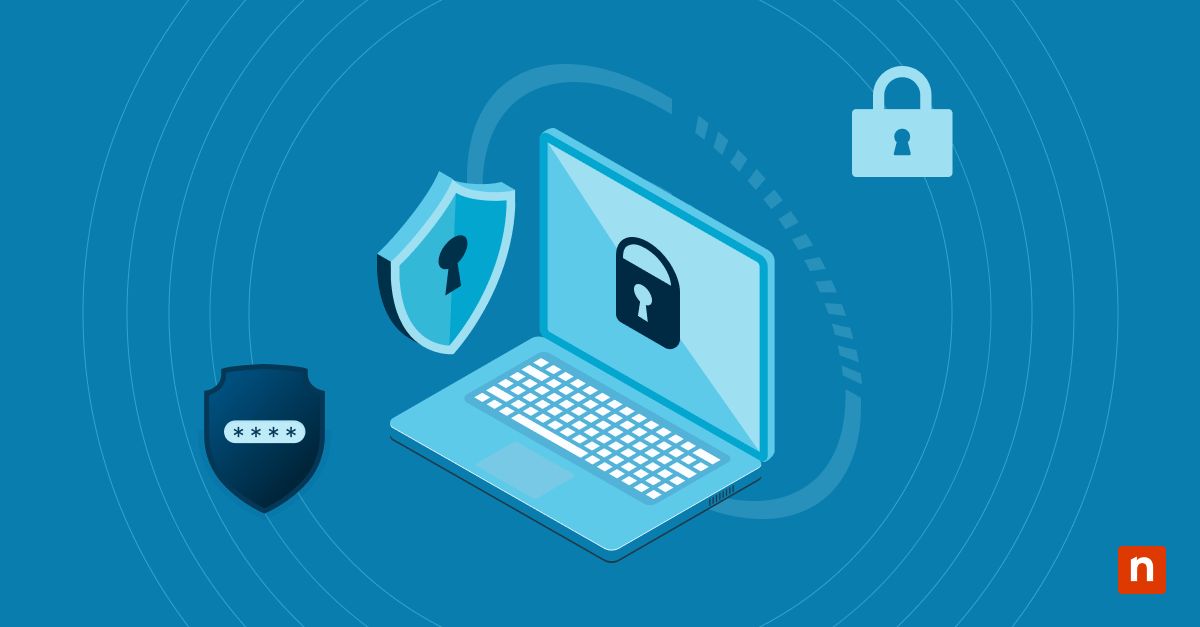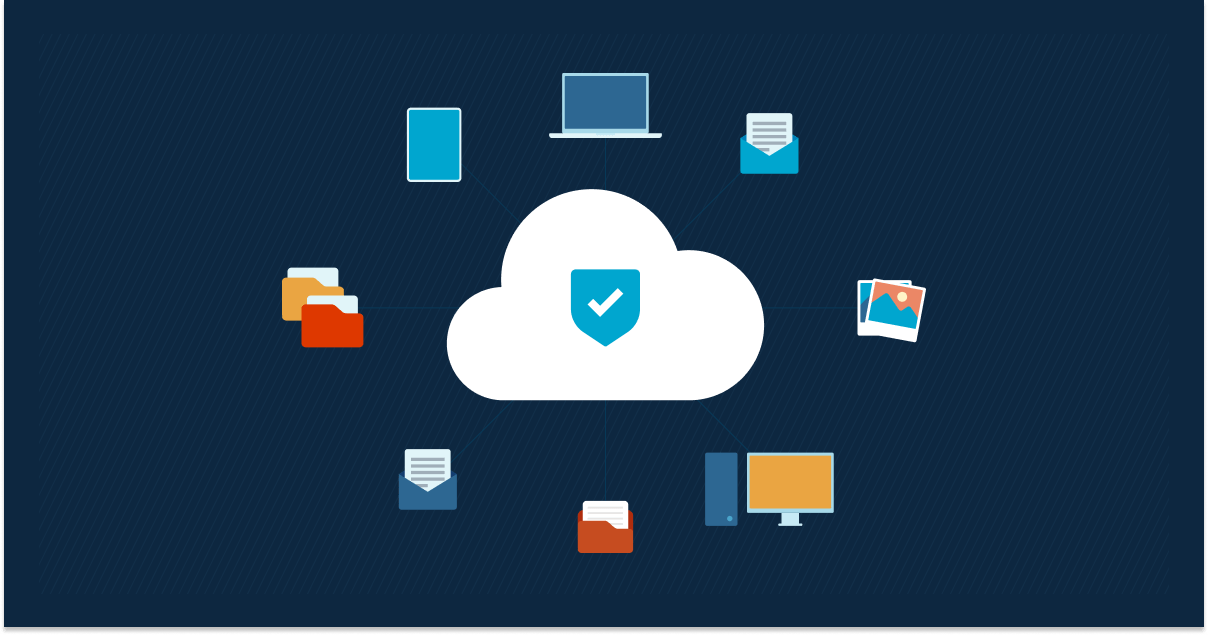Imagine this: You try to log in to your computer and instead of asking for your password, your computer presents you with a BitLocker recovery screen requesting your BitLocker recovery key
Now what?
First step: Don’t panic. This article will guide you through locating your BitLocker recovery key. We’ll also review some methods you can use to make sure you can always find it when you need it. If the BitLocker recovery screen catches you by surprise, don’t worry—these steps will help you regain access to your device.
Simplify BitLocker Management
Never lose access to your encrypted drives again. Sign up for a free trial of NinjaOne to securely store and manage your BitLocker recovery keys.
What is BitLocker?
BitLocker is a tool integrated into the Windows operating system. It functions as a data encryption tool to help protect a user’s entire drive, safeguarding sensitive information from unauthorized access, especially if a device is lost or stolen. When you enable BitLocker, it generates a complex BitLocker key to encrypt your data. The BitLocker key is essential for unlocking your drive and accessing your files.
BitLocker encrypts all data on your drive, making it inaccessible without the correct decryption key. Users can choose to protect this key using a strong password, a physical smart card, or a Trusted Platform Module (TPM) chip on their motherboard. These methods provide robust security, safeguarding access to sensitive data from unauthorized access, even if your device is lost or stolen. This ensures that a user’s sensitive data is not accessible to people who are not authorized to access it, even if the physical drive is removed and accessed separately.
What is a Bitlocker recovery key?
What is a recovery key?
In IT, a recovery key is a general term pertaining to a unique, alphanumeric code used to regain access to a secured system. Recovery keys are usually the next resort when the primary access methods, such as passwords or PINs, don’t work. These keys can apply to a variety of systems beyond BitLocker, including cloud services, password managers, and encrypted files.
In most cases, the term “recovery key” refers to a fallback mechanism or safety net that restores access to encrypted information or retrieves locked data.
What is a BitLocker recovery key?
There can be instances when you forget the decryption password for your encrypted drive. This is when the BitLocker recovery key becomes essential. But what is a BitLocker recovery key exactly?
A BitLocker recovery key is a 48-digit number that you can utilize to unlock an encrypted drive if you cannot provide the usual password or PIN. It serves as a backup to ensure you can still access your data even if you forget your primary credentials.
How does BitLocker work?
BitLocker is an encryption capability that is built into the Windows operating system. The feature safeguards critical data from unauthorized access, even if the device is lost or stolen. When enabled, BitLocker utilizes a cryptographic key to secure the data on your drive. Without the decryption key, the data is unreadable to anyone attempting to access it.
When you turn on BitLocker, the system generates an encryption key securely stored within the device’s Trusted Platform Module (TPM) chip. The chip adds a layer of protection by ensuring the device is encrypted unless a user provides the correct authentication credentials. With this in place, BitLocker may require a recovery key to ensure that the device has not been tampered with if any vital changes are made to the system.
Why is my computer asking for my BitLocker recovery key?
BitLocker is a built-in encryption feature in Windows that protects your data by encrypting the entire drive. Once enabled, this encryption ensures that even if someone gains unauthorized access to your computer, they won’t be able to access your files without the recovery key.
Why is your computer asking for your BitLocker recovery key now? Several scenarios may lead to this. It could be due to a hardware change, a software update, BIOS changes, changing your boot components, or a simple system glitch. Whatever the reason, it’s essential to have your recovery key ID handy to regain access to your encrypted drive.
What triggers BitLocker Recovery Mode?
Multiple reasons can trigger BitLocker Recovery Mode. These scenarios will require you to enter the recovery key for the system to grant you access to your drive. Clarifying these triggers helps you pinpoint and narrow the possible reasons why BitLocker locks your device unexpectedly. Here are some common triggers that you may encounter:
- Hardware changes. Significant hardware changes, such as swapping out vital system components like the motherboard, TPM chip, or hard drive, can trigger BitLocker Recovery Mode.
- BIOS/UEFI updates. As a security protocol, system firmware changes may trigger BitLocker Recovery Mode. That’s because firmware updates may make the system think that there is a threat or compromise.
- Incorrect login attempts. Entering an incorrect password multiple times can prompt BitLocker to request the recovery key.
- Operating system updates. There may be cases where major Windows updates or patches can reset certain security parameters, leading to a recovery key prompt.
Malware or security threats. Potential tampering or malware attacks attempting to access your encrypted data can trigger BitLocker Recovery Mode.
BitLocker encryption key vs. BitLocker recovery key vs. BitLocker key ID
Before continuing, we must clarify these terms since some use them interchangeably. Here are the differences between BitLocker encryption key, BitLocker recovery key, and BitLocker key ID have differences:
BitLocker encryption key
A BitLocker encryption key is a complex cryptographic key generated by the system to encrypt the drive’s data. It is not directly accessible to the user and is protected by the system’s security measures.
BitLocker recovery key
This is a 48-digit number that can be used to unlock the drive in case the user loses access to it. It can be protected by various methods, such as saving it to a Microsoft account, printing it, or storing it on a USB drive.
BitLocker key ID
A BitLocker key identifier or BitLocker key ID is a unique identifier associated with a BitLocker recovery key. It’s used to retrieve the recovery key from Microsoft’s servers. A BitLocker key ID is used to associate the correct recovery key with the system or drive in question, particularly in scenarios where multiple devices or drives are managed.
In this blog post, we are focusing on the BitLocker encryption key and BitLocker recovery key.
How to find your BitLocker recovery key
There are three main methods for recovering your BitLocker recovery key ID: You can use your Microsoft account, PowerShell, or find it offline.
Where is the BitLocker recovery key stored?
Your recovery key can be stored in several locations depending on how BitLocker was configured. Knowing where to look can save you time and frustration if your device prompts you for the recovery key. Here are some typical locations where the BitLocker recovery key is stored:
- Microsoft account: BitLocker recovery keys set up with a Microsoft account can be found by visiting account.microsoft.com/devices/recoverykey.
- Active Directory (AD): Recovery keys may be stored in Active Directory in enterprise environments, allowing IT administrators to access them.
- Azure Active Directory (Azure AD): Recovery keys for cloud-managed devices can be stored in Azure AD.
- USB drive: Users also have the option to store their recovery key in an external storage like a USB drive. They just have to insert it into their computers and check for a file, typically a text file, that contains the recovery key.
- Printed copy: Some users who want a hard copy of their recovery may print them. However, this method may require strict security measures to prevent compromise.
Find the BitLocker recovery key with your Microsoft account
If you set up your device and turn on BitLocker yourself, your Microsoft recovery key will be in your Microsoft account.
Open a web browser on any other device, and type the following URL into the address bar: https://account.microsoft.com/devices/recoverykey. You’ll find your BitLocker recovery key there.
Note that Microsoft support isn’t able to access or reset a lost BitLocker recovery key ID.
What if someone else set up your computer or activated BitLocker? The Microsoft recovery key might be in their Microsoft account. If you weren’t able to find your recovery key in your Microsoft account, consider talking to the IT professional or support person who set up BitLocker.
Find the BitLocker recovery key using PowerShell
To find your BitLocker recovery key using PowerShell, follow these steps:
- Press Windows Key + X on your keyboard and select Windows PowerShell (Admin) from the menu.
- In the PowerShell window, type the command
Get-BitLockerVolumeand press Enter. - Look for the drive that requires the recovery key. Note down the VolumeType and MountPoint values associated with that drive.
- Now, type the command
(Get-BitLockerVolume -MountPoint <MountPoint>).keyProtectorand replace <MountPoint> with the actual mount point of the drive. - Press Enter, and you will see the recovery key ID associated with the drive.
Using PowerShell, you can quickly retrieve your BitLocker recovery key ID for the drive that requires it. If you are unable to access PowerShell, don’t worry. We’ve got another alternative method for you.
Find the BitLocker recovery key ID offline
If you can’t find your BitLocker recovery key in your Microsoft account or by using PowerShell, you can try these offline methods to find your BitLocker recovery key ID:
- Check your printouts or saved files: If you ever printed or saved a copy of your BitLocker recovery key ID, now is the time to look for it. Check any physical or digital records that might contain the recovery key, such as email attachments, text files, or even photographs.
- Check for a recovery key on a USB drive: If you previously saved the recovery key to a USB drive, insert it into your computer and explore its contents. Look for any files or documents that contain the recovery key information.
- Ask your system administrator: On a work domain, your system administrator may have a record of your recovery key ID or be able to provide you with further assistance in recovering your data.
These offline methods give you a good chance of finding your BitLocker recovery key ID. However, if you search in all of these spots and still can’t locate the recovery key, don’t worry. There are a few more options you can explore.
What if you can’t find your BitLocker recovery key ID?
If you’ve checked all of the above and still can’t find your BitLocker recovery key ID, here’s what you can do:
- Check for other recovery options: If you have multiple devices linked to your Microsoft account, check if any of them are storing the Microsoft recovery key ID. Sometimes, your Windows recovery key may be associated with another device that you forgot about.
- Use data recovery services: In extreme cases where all other options fail, you can consider employing professional data recovery services. These services specialize in retrieving data from encrypted drives and may be able to help you recover your lost BitLocker recovery key ID.
Remember, prevention is always better than cure. To avoid future inconveniences, adopting best practices for backing up and storing your BitLocker recovery key.
What happens if you lose your BitLocker recovery key?
While losing your BitLocker recovery key doesn’t necessarily mean your data is lost forever, you have to take swift actions to explore all possible recovery options to alleviate the situation. But first, you must know the potential implications of losing your BitLocker recovery key to plan your next steps.
Consequences of losing your recovery key:
- Data inaccessibility: Losing your Windows recovery key may also cause you to lose access to your encrypted data.
- Device lockout: Your computer will lock you out until the Windows recovery key is provided.
- Risk of data loss: Permanent data inaccessibility may occur if you cannot find the recovery key.
Steps to take if you lose your recovery key:
- Check all possible locations: Go through the locations where your recovery key may be stored. These locations may include your Microsoft account, USB drives, printed documents, and more.
- Contact IT support: The IT department may have a copy of your recovery key that they can provide you if you lose it. Contacting IT support may help with this situation, especially if you use a company-owned device your organization manages.
- Professional data recovery services: There might be cases in which you have to contact professional data recovery services. These services have specialists who are equipped to retrieve encrypted data. However, this method may be expensive, so you have to consider the cost.
Best practices to backup and store your BitLocker recovery key
To ensure you never lose access to your encrypted drive follow these best practices for backing up and storing your BitLocker recovery key:
- Print a hard copy: When you first enable BitLocker encryption, consider printing a hard copy of your recovery key ID. Store it in a safe and secure location, such as a locked drawer or a safe deposit box.
- Save it in a password manager: If you use a password manager, consider adding your recovery key ID as a secure note. Password managers offer encryption and backup features, which can be useful for storing sensitive information like recovery keys.
- Store it in a cloud storage service: If you trust cloud storage services, you can upload a digital copy of your recovery key ID to a secure cloud storage provider. Ensure you use a strong, unique password for your cloud storage account.
- Save the recovery key to your Microsoft account: This method can help ensure that the key is accessible from any device as long as internet access is available.
- Back it up to a USB drive: Save the key to a USB drive and label it clearly. Just like how you store a printed hard copy of a recovery key, you must store the USB drive in a secure place.
Backing up and storing your BitLocker recovery key ID will give you peace of mind. as it will ensure that it’s easily accessible whenever you need it.
Common Issues with BitLocker Recovery Keys and How to Solve Them
Sometimes, users encounter issues with their BitLocker recovery keys. Below are some of the most common problems and their solutions.
Common Issues:
- Lost recovery key: To retrieve your lost recovery key, you can explore your next course of action using the steps outlined above.
- Recovery key doesn’t work: Verify if you are entering the correct key for the drive in question. You must also double-check the key ID displayed on your device and match it with the recovery key.
- Recovery key saved in an inaccessible location: Reaching out to IT support may be your last resort if the recovery key is saved in a location that is no longer
Secure Your Recovery Keys
Ensure your BitLocker recovery keys are always safe and accessible. Request a demo of NinjaOne’s endpoint management solution today.
Use NinjaOne to store BitLocker recovery key IDs
Losing access to your encrypted drive can be a nerve-wracking experience. However, you can prevent future worries by backing up your BitLocker recovery key ID to a secure place right now.
With more workplaces encrypting disks for data protection and regulatory compliance, knowing your drives’ encryption status is valuable information. NinjaOne automatically detects the encryption status of all Windows and Mac devices and securely stores the Bitlocker recovery key ID for Windows devices.
You’ll never have to worry about misplacing your recovery key again. Read more about the features in our 5.0 release and start your free trial today.
Bitlocker recovery key FAQs
What if I saved my recovery key in an inaccessible location?
If you saved your recovery key in an inaccessible location (e.g., a lost USB flash drive or an old email you no longer use), you need to try other options, such as checking your Microsoft account. You can also ask your system administrator for help. For future security, consider storing the key in multiple secure places.
Can I turn off BitLocker if I forget my recovery key often?
Yes, BitLocker can be turned off in the Control Panel. However, this potentially reduces your data protection.
Is storing my BitLocker recovery key in cloud storage risky?
Storing your BitLocker recovery key in cloud storage can be safe if your cloud account is secured with a strong password and two-factor authentication.
Will hardware changes make BitLocker ask for my key?
Yes, major changes (like BIOS updates) can trigger BitLocker to request the key. Have it ready before doing any hardware upgrades.
Can I automate my BitLocker recovery key backup?
For managed environments, tools like NinjaOne can automate the storage of BitLocker recovery keys. This can be useful for IT administrators. If you’re managing your own device, consider using a password manager with secure note storage or exploring cloud backup solutions that support automated syncing and encryption for sensitive files.








